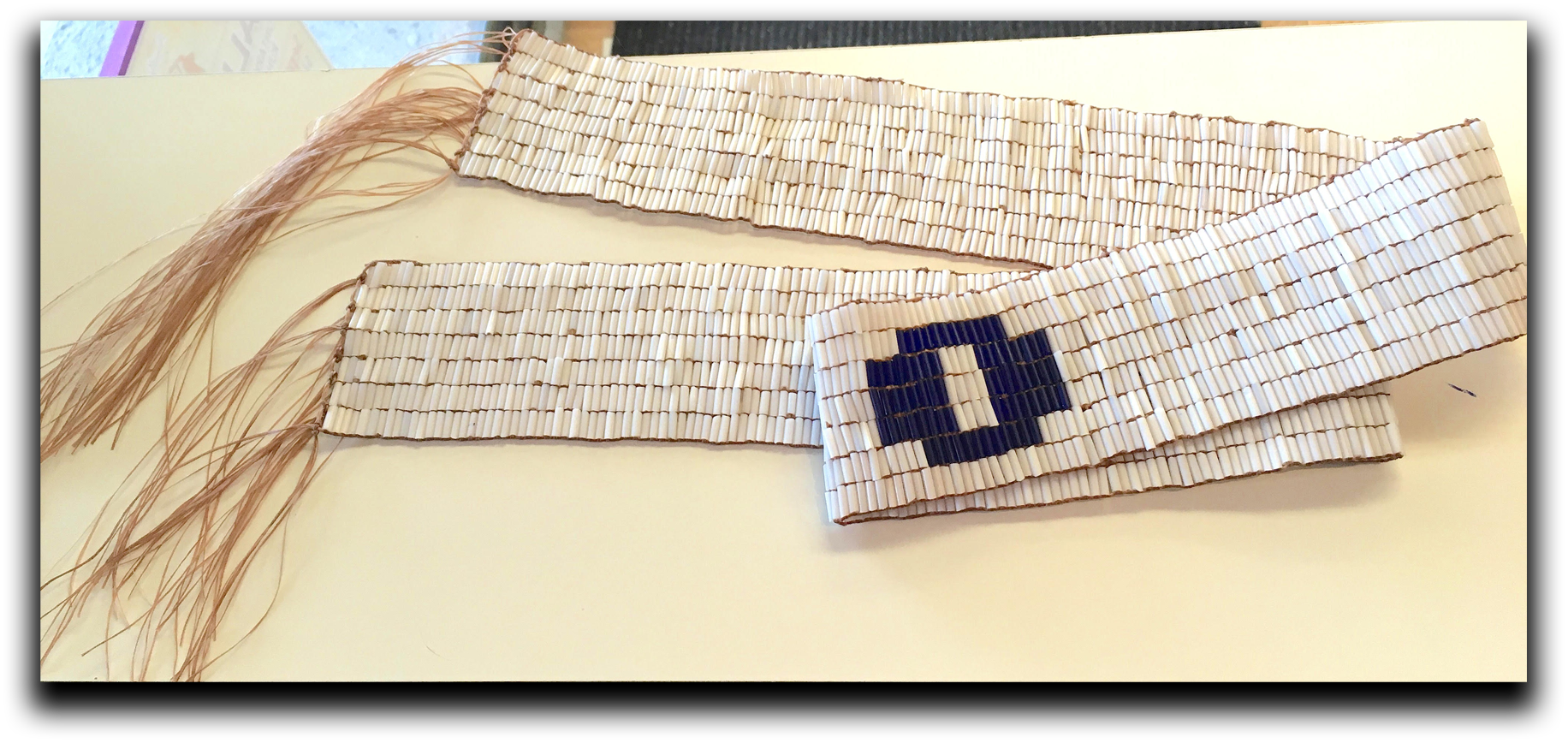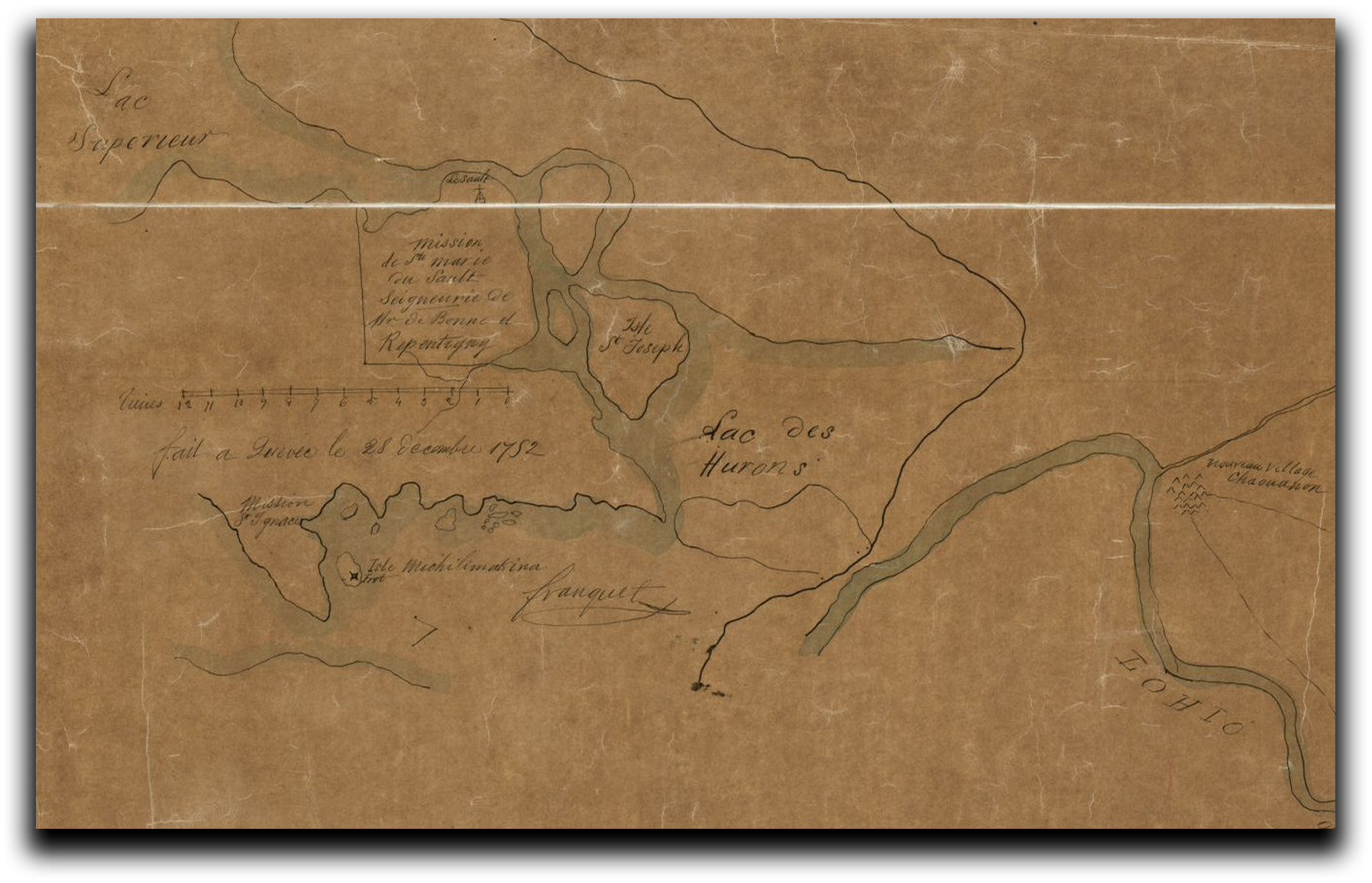1615
Colonialism in Michigan’s Upper Peninsula begins in 1615 with the arrival of Samuel de Champlain. Champlain is the first recorded European to have contact with the Anishinaabe people when he arrives at Lake Huron, near present day Sault Ste. Marie, Canada along the shore of Georgian Bay. At the time of French settlement, approximately 15,000 Native Americans from various tribes lived in the area that became Michigan.
1620
Étienne Brûlé lands at Bahweting (Sault Ste. Marie, Michigan). He is believed to be the first person of European descent to step foot on Michigan soil.

1641
The first Jesuit missionaries, or members of Saint Ignatius Loyola’s Society of Jesus, arrive in Sault Ste. Marie. There, they had hoped to establish a mission, however their plans are delayed due to the ongoing Beaver Wars.

1660
First official trade mission from Quebec arrives in the Lake Superior region. Accompanying the traders is the Jesuit priest Rene Menard, who establishes the first Catholic mission in the Upper Peninsula, St. Therese Mission in the Keweenaw Bay. Menard later disappears while searching for a group of Huron Indians in Wisconsin.

1668
Jesuit missionaries, Father Louis Nicolas, Jacques Marquette, and Brother Louis Boeme establish a Catholic mission at Sault Ste. Marie. This is the first permanent European settlement in the Upper Great Lakes. At this mission and settlement the Jesuit missionaries focus on teaching the Ojibwe people in the area Western farming methods and converting to Catholicism in hopes of colonization, while also keeping the mission and settlement self-sustainable.

1669
Father Dablon built the first Catholic church in Michigan at Sault Ste. Marie.
1670
Father Dablon continued to be a missionary after founding the first church in the area. He then leaves Sault Ste. Marie and travels to modern day St. Ignace where he founds another Catholic mission.
1671
Francois Daumont Sieur de Saint-Lusson in 1671, uses the mission located in part of Sault Ste. Marie that is today in Ontario, to declare the area under the rule of King Louis the XIV. This makes the region officially part of New France. Meanwhile, Father Marquette goes to the newly founded mission in St. Ignace and builds a temporary chapel. While the founder of the mission was Father Dablon, Father Marquette is often considered the founder since he built the chapel.

1674
After several years the temporary church at St. Ignace is replaced with a permanent building. The first sermon offered at the new church is given in Odawa, Huron, and French so that all people in attendance can understand. Within the next year, forty-four Huron and Odawa people are baptized into Catholicism at the church. At this time Philipp Pieson is in charge of the mission in the St. Ignace.
1694
Alcohol is introduced in the Fur Trade in the Straits of Mackinac. The commander at Fort de Baude, Antoine La, Mothe Cadillac, most famous for founding the city of Detroit, often uses brandy as a trade good as it increases his profits.

1701
The One Dish One Spoon Treaty is made between the Anishinaabe, Mississaugas, and Haudenosaunee peoples. This treaty states that basically all of the land from the Great Lakes to Quebec and from Lake Simcoe to the United States is to be shared between these three tribal nations. It is debated whether or not this land includes parts of New York and Michigan.

1702
Étienne de Carheil, a Jesuit priest and chief missionary to Native Americans of the Straits of Mackinac area, writes to Governor Callieres criticizing the use of brandy in trade and other activities by the fur traders. He writes “the two Infamous sorts of Commerce which have brought the missions to the brink of destruction: . . . the Commerce in brandy, and the Commerce of the savage women with the French. Both are carried on in an equally public manner, without our being able to remedy the evil, because we are not supported by the Commandants. . . . All the villages of our savages are now only Taverns, as regards drunkenness; and sodoms, as regards immorality from which we must withdraw, and which we must abandon to the just Anger and vengeance of God.”
1715
The French build Fort Michilimackinac on the Southern shore of the Straits of Mackinac. This area would later be known as Mackinaw City and is the current location of the Fort.

1717
The first recorded smallpox epidemic in the area occurs in the Upper Lakes Country.
1750
France builds Fort de Repentigny in Sault Ste. Marie. The post was originally
built to protect the French fur trade in the area.

1754
The 7 Years War, or The French and Indian War as it is often known, begins between France and England. The Anishinaabeg people are allies with France during the war.
